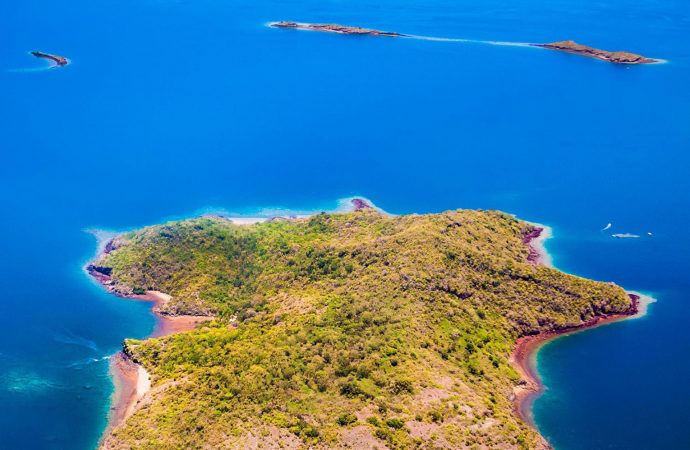An “exceptional phenomenon” near the tiny islands of Mayotte may help explain a low-frequency rumble that swept around the world last year.
Source: National Geographic
On May 10, 2018, the geologic beasts of the tiny island of Mayotte began to stir. Thousands of earthquakes rattled the French island, which is sandwiched between Africa and Madagascar. Most were minor shakes, but they included a magnitude 5.8 event that struck on May 15, the largest yet recorded in the region’s history.
In the midst of this seismic swarm, a strange low-frequency rumble rippled around the world, ringing sensors nearly 11,000 miles away—and baffling scientists.
Now, researchers may have at last found the source of the unexpected activity: the birth of a submarine volcano some 31 miles off Mayotte’s eastern shore. Sitting about two miles underwater, the baby volcano stretches nearly half a mile high and extends up to three miles across.
The observations came after French scientists launched a multi-pronged mission to get a better grip on the origin of the ongoing seismic swarm. Coordinated by France’s National Center for Scientific Research (CNRS), the work includes surveys from the ship Marion Dufresne co-led by Nathalie Feuillet from the Institut de Physique du Globe de Paris and Stephan Jorry of the French research institute IFREMER.
The data are still preliminary, and many questions remain unanswered as the scientists work to analyze their findings and publish the research in a peer-reviewed journal. In the meantime, the team has issued a joint press release announcing the new volcano and its probable link to the odd throng of earthquakes.
“In light of this discovery, the government is fully mobilized to pursue and deepen our understanding of this exceptional phenomenon and take necessary measures to categorize and prevent any risks it represents,” the agencies say in the release.
Stephen Hicks, a seismologist at Imperial College who previously analyzed Mayotte’s strange seismic happenings, adds that the announcement offers some much needed clarity for the island’s inhabitants, who have been thoroughly shaken after months of unexplained tremors.
The geologic mystery
Mayotte is part of the Comoro archipelago, a string of volcanic islands northwest of Madagascar. While volcanism isn’t unheard of in the region, Mayotte has long remained silent, with its last eruption bursting free more than 4,000 years ago. But starting in May of last year, the geologic activity on Mayotte kicked into high gear. Since the swarm began, more than 1,800 earthquakes greater than magnitude 3.5 have rattled the tiny island. The land itself also seems to be on the move, drifting 0.6 inches east and sinking roughly 0.4 inches down each month since mid-July.
In November, the curious low-frequency rumbles began their global spread, sticking around for more than 20 minutes. Too low of a frequency for humans to feel, only one person noticed the curious waves: An earthquake enthusiast who goes by the handle @matarikipax spotted the unusual zigzags on the U.S. Geological Survey’s real-time seismogram displays and posted them on Twitter, drawing an international cohort of scientists to the mystery.
Even back then, the experts’ conclusion was that the quakes and strange seismic signal were likely related to the movement of molten rock. Perhaps the earthquake swarm was the result of magma squishing through the subsurface, and the low-frequency rumble was caused by waves resonating in a collapsing magma chamber.
The link to volcanic activity gained further support from a preprint study posted to the EarthArxiv server in February 2019. That research pinned the swarm on a massive magma chamber starting to drain, in what could be the largest off-shore submarine volcanic event yet documented.
But with limited monitoring of these earthquakes near their epicenters out at sea, and no direct evidence of an eruption, nothing more definitive could be said at the time.
Visit National Geographic to learn more about the strange movements

































Leave a Comment
You must be logged in to post a comment.